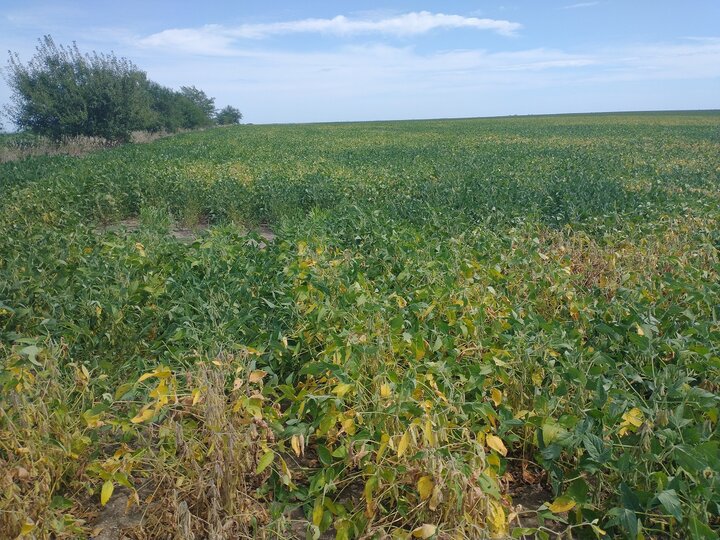Some parts of the state are not getting the moisture for their soybean crop so the decision to salvage them for hay or silage may have to be made. Soybean hay or silage can have feed values very similar to alfalfa; but it is very important to put it up properly.
The first thing is not to get in a big hurry because August rains could make a crop. Harvest soybean forage when leaves start to turn yellow; just before they drop off. It’s especially important to harvest before a freeze to prevent rapid leaf loss.
Soybean hay is challenging to make. The leaves dry quickly and then become crumbly if raked. The stems are quite woody and dry slowly. Be sure to condition or crimp the hay to hasten stem dry down. Also, avoid raking if at all possible. Soybean leaves crumble easy when dry, which will cause some yield loss and much lower feed value. If you must rake to merge windrows together for baling, do it within one day of cutting. Do not rake just to hasten drying or leaf loss will be severe.
Making good soy silage is less risky if you have silage equipment and do it right. Obviously, you would rather harvest a good bean crop than make hay or silage out of your soybeans. But when drought and heat prevent a good bean crop, it's nice to know that they can be salvaged as hay or silage.
It is recommended to check the feed value by getting a sample for analysis to help make a decision on the class of livestock to feed and the nutrient make up of your soybean hay or silage
Interviews with the authors of BeefWatch newsletter articles become available throughout the month of publication and are accessible at https://go.unl.edu/podcast.

